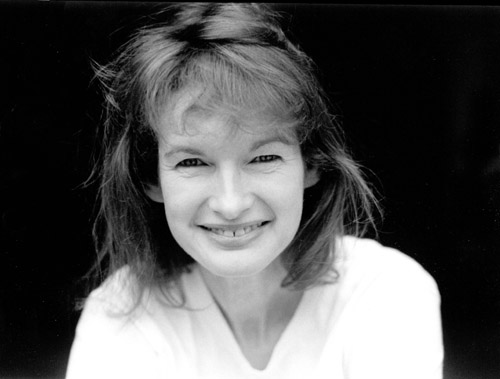
1948 - 2019
April's professional associations included:
- Signature Member - Oil Painters of America (OPA)
- Signature Member - Laguna Plein Air Painters Association (LPAPA)
- Signature Member - California Art Club.
- Exhibitor - Festival of Arts in Laguna Beach, CA
From her earliest years, April's vision was to paint. She kept this vision throughout her college years, and began showing in galleries shortly after graduating. Except for six years as the designer and art director for a national magazine, April's full-time career has been creating fine art.
"My parents were designers and innovators. They architected and built their own homes, designed and made most of their own furniture and clothing. They immersed their children in these projects. All of this was inspired by a strong sense of Scandinavian sensibility and influenced by the experience their parents had of being early covered-wagon pioneers in the American West. I was the oldest of 10 children."
"Even at an early age I had a natural inclination for visual rendering. My favorite activity was to take my sketchpad and paints and head for the woods. I was fortunate to have a wilderness out my back door. I would spend hours there sketching and painting both small details from nature as well as large vistas. "
With strong encouragement from her high school teachers, April competed for and won the prestigious May-Cohen Art Scholarship, which enabled her to begin university work in fine art. "My high school years were immersed in art. My teachers would encourage me to paint murals for the school rather than taking some non-art classes."
April had the opportunity to study fine art under several influential masters while obtaining her degree in art at BYU. These included William Whitaker, Gary Ernest Smith, Trevor Southey, and Alex Darais. She was also profoundly influenced by the expansive collection of Maynard Dixon paintings that were part of the university's permanent collection.
Shortly after receiving her bachelor's degree April began exhibiting her work in galleries. During this time she encountered and overcame two episodes with cancer. These encounters left a deep impression on her work reflecting not only on the frail nature of existence on Earth, but also our struggle with the perception of opposition. It was during this period that she created a controversial "dream" series, renditions of pivotal scenes from the subconscious. These paintings, often autobiographical, deal with emerging self-awareness and growth from the perspective of a woman's psyche. Many of these are held in private and corporate collections. A sample of work from this period is available on her web site in the "early works" section.
The next major turning point came when April returned to her roots in the American West. "In an effort to stretch my limited resources and still continue painting I moved to a small adobe on an Indian reservation. I was able to paint the real, rural, Intermountain West day after day. I was living those Maynard Dixon paintings. This was a profound experience that even continues to influence my present work."
"There is something unexplainable about the experience of the wilderness, and living close to the land. It is an experience that resonates deeply within all of us. As enmeshed as I am now in contemporary life, my spirit still holds these experiences that are infused in my work."
April moved to Southern California in the 1990's, continuing the tradition of the California Plein Air movement that began a century earlier. Being an outdoor painter, the same scenes that captivated the early plein-air masters influenced April's work during this period, including the missions, canyons, and coastlines of Southern California.
Gradually April turned her attention to cityscapes and Mid-Century industrial landscapes, focusing on structures that were built from the 1920's through the 1950's. These include old railroad yards, bridges, grain elevators, factories, refineries, and generating plants. "I believe the work of an artist is to not only connect with the beauty of nature but to enlighten the overlooked and forgotten parts of our present landscape." She approaches this new subject matter in her same interpretive style, expanding the traditional California Plein-Air movement.
April painted on-site in and around Southern California and from her home studio in Laguna Beach.
Although my paintings are representational, I am defiantly not trying to emulate photo-realism. Rather, my mind and my eye work together to form a double vision. This brings to the canvas impressions of both the seen and the unseen. Without both the scene does not come alive. For me, art is about seeing not only the obvious image, but interpreting its essence.
View recent shows, gallery representations, and awards